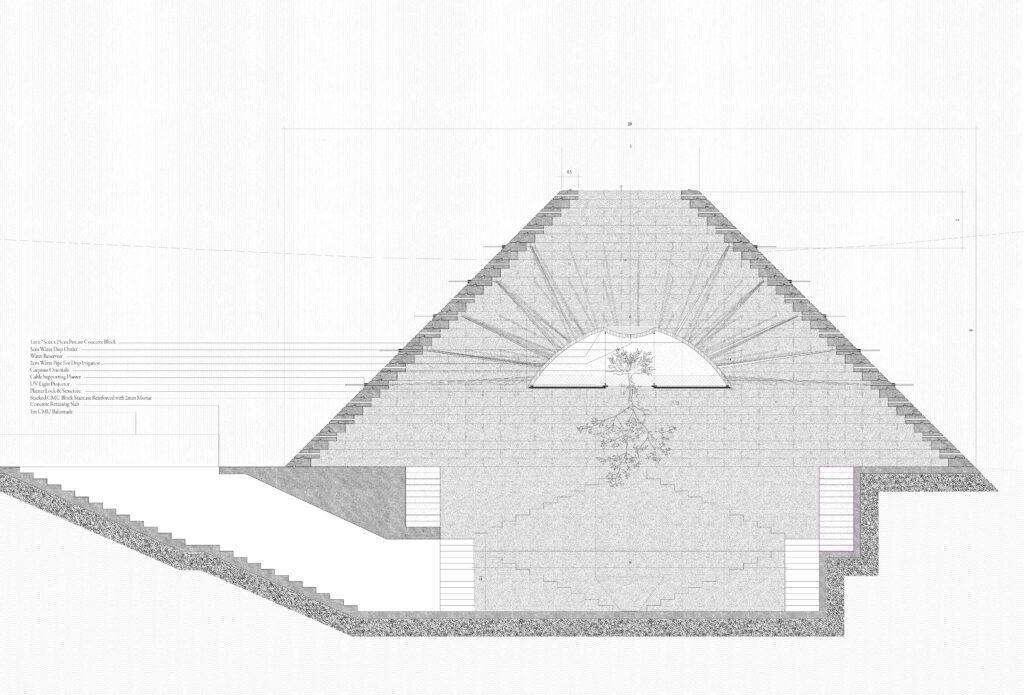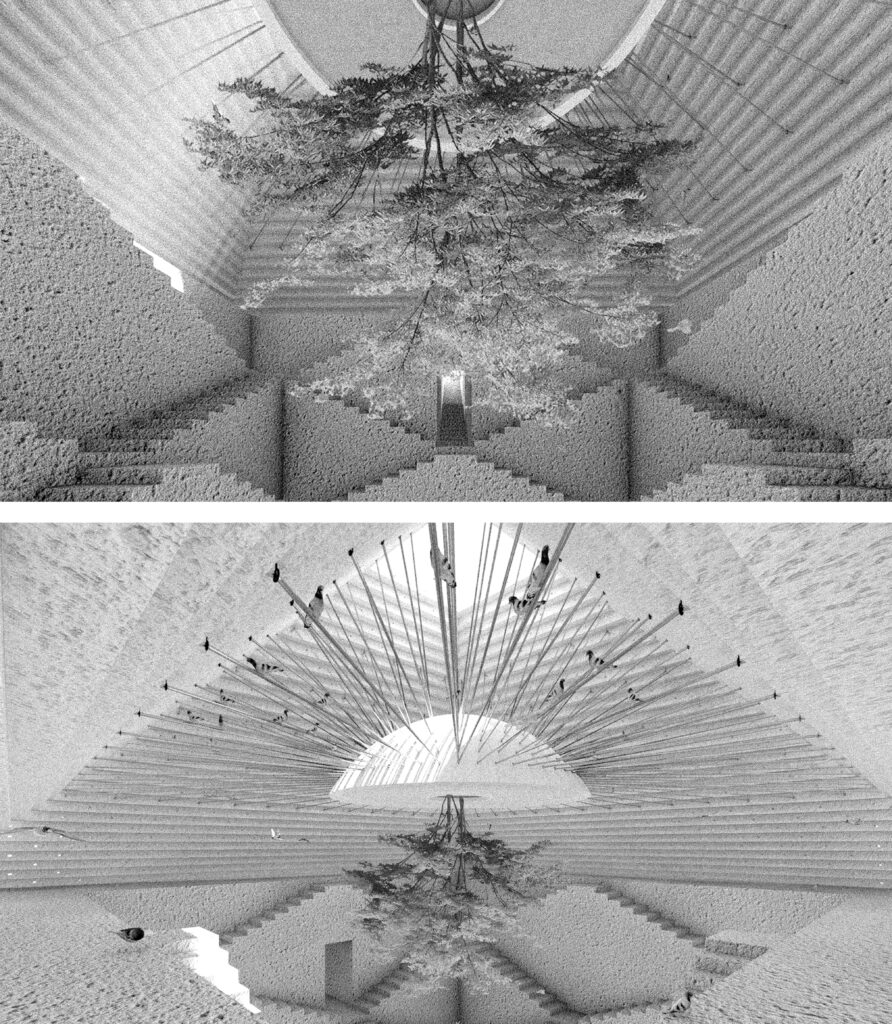CENOTAPH: DEPRESSION / INTROSPECTION
The fourth architectural intervention encapsulates the stage of depression, offering an exploration of one’s own mortality in and around a monolith structure. The visitor is greeted by a pyramid, constructed with intertwining precast concrete blocks, concealing within its walls an inverted tree suspended in space and time.
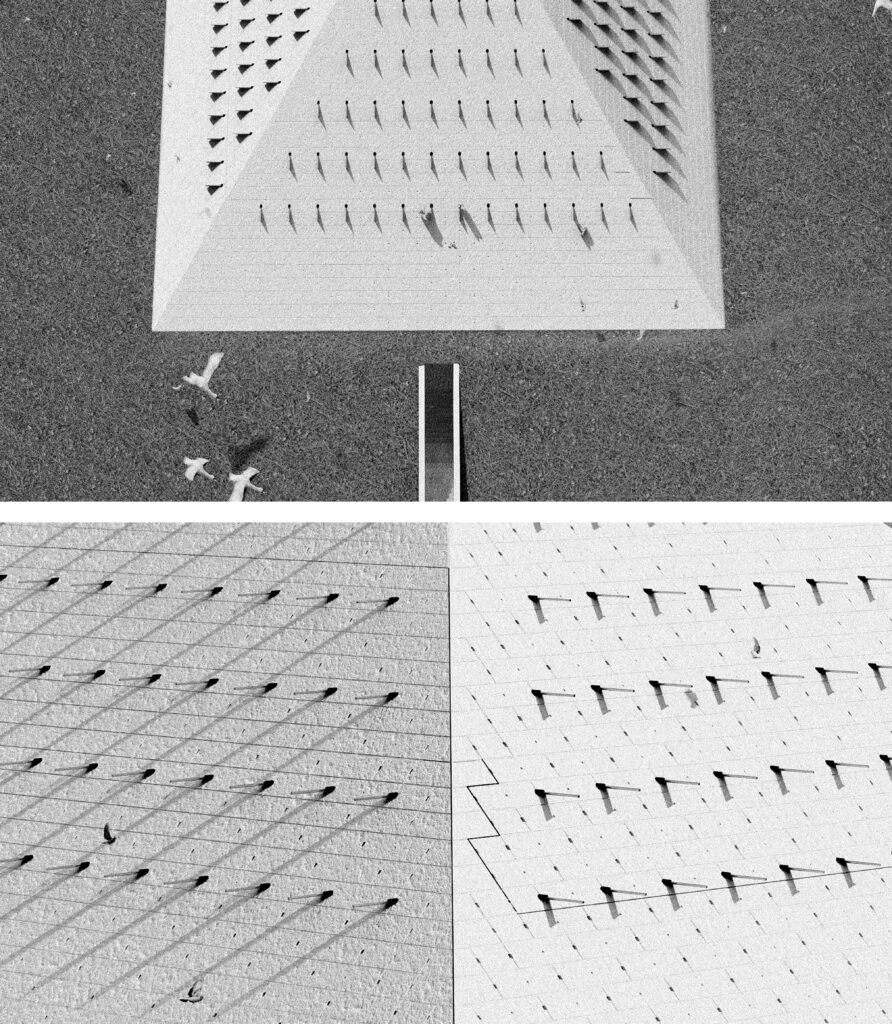
The pyramid’s imposing presence acts as a manifestation of the weight of despair, with an invitation for introspection that usually accompanies the stage of depression. Its rigid and angular form evokes a sense of containment. Within this somber enclosure, lies an opportunity at acknowledging the fragility and impermanence of life.
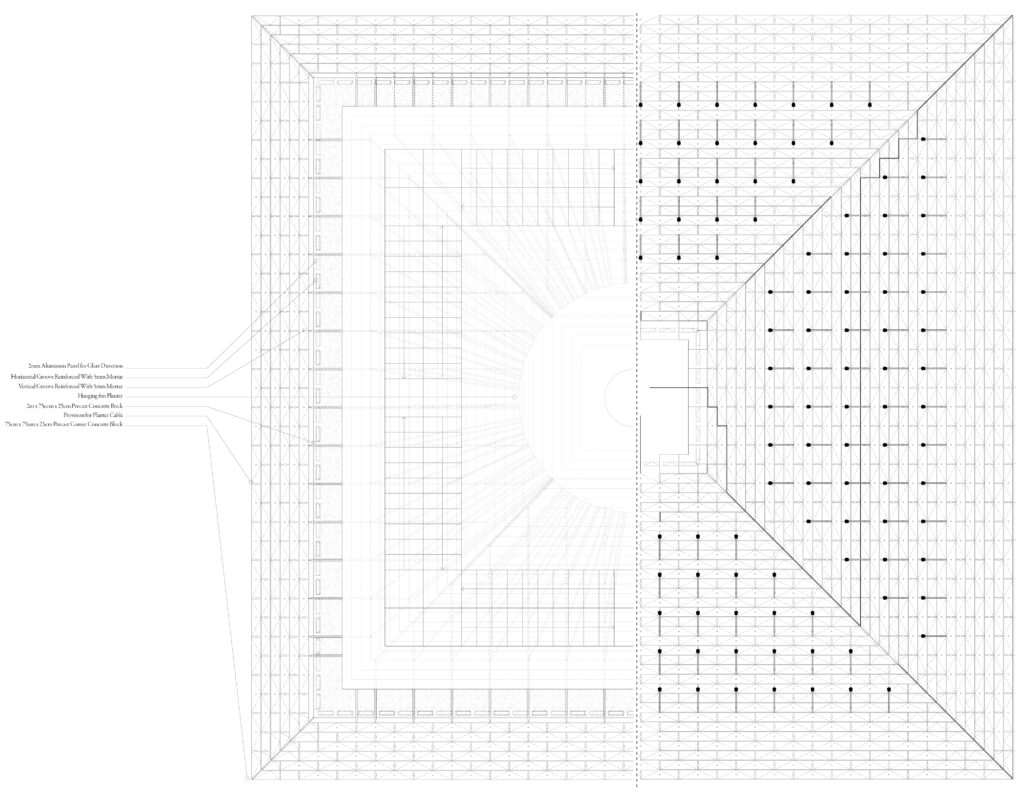
At the heart of the pyramid, an inverted tree hangs absurdly in space. Supported by a series of cables interlaced with the precast concrete blocks, the tree stands upside down, its roots reaching skyward towards a water reservoir. Its position is thus a disruption of traditional life cycles, challenging assumptions about the natural order of existence. Illuminated by artificial lighting, the suspended tree’s branches spread out above the central space. Here, a series of steps beckon visitors downward, guiding them beneath the tree’s canopy.
This contemplative space beneath the tree offers an opportunity for introspection. The inverted foliage above serves as a reminder of delicate balance, inviting the visitor to embrace the ephemeral nature of existence. The intervention’s structure mimics the logic of its conception. The precast concrete blocks, intertwined and forming the pyramid’s structure, hold the tree’s cables in place. Here there is an interplay unfolding between permanence and impermanence, epitomized by the heavy character of the stone and the lightness of the indoor suspension.
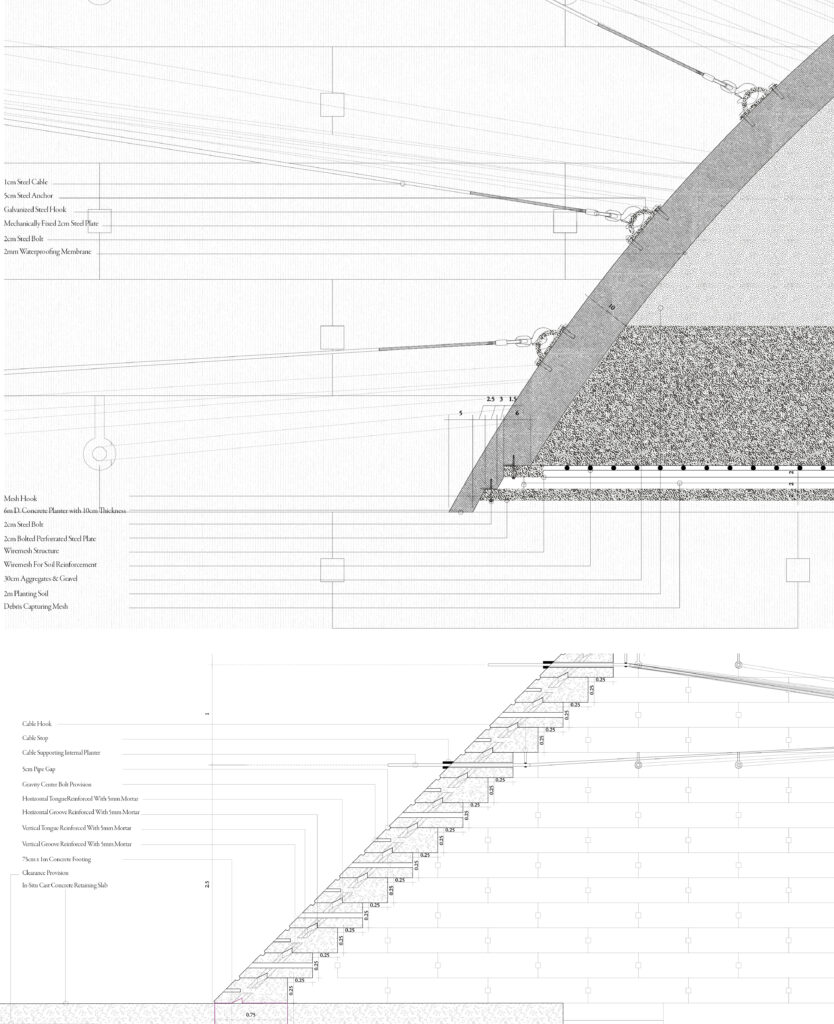
The intervention is an invitation to confront and be aware of mortality. The inverted tree within the pyramid’s confines becomes a catalyst to contemplate the impermanence of life and find solace in embracing the fleeting beauty of existence. The pyramid accordingly becomes a cenotaph: an ode to life, but simultaneously a reminder that it is impermanent.

